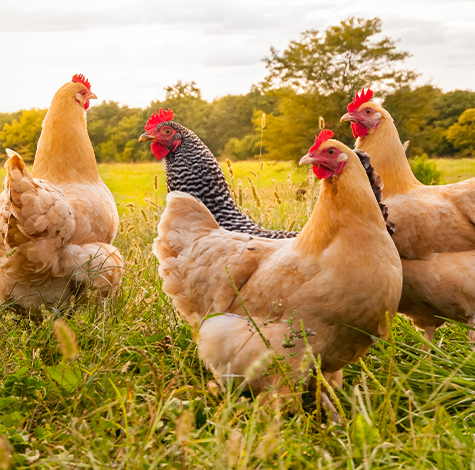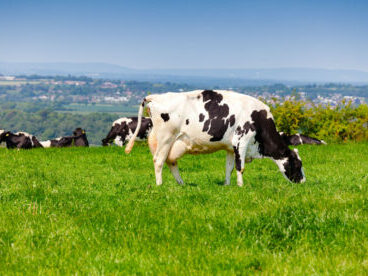We asked UFAC-UKs Mike Chown for his assessment of the winter so far and the prospects moving forward regarding margins, efficiency and yield.
Getting energy supply right will be crucial
We asked UFAC-UKs Mike Chown for his assessment of the winter so far and the prospects moving forward.
Q: With dairy farmers being advised to rebuild margins and cash reserves in the light of current economic uncertainty, how do you see the winter shaping up?
A:It has proved to be a difficult start to the winter with many cows off the predicted pace and failing to perform as expected. Farmers are not seeing the yields they anticipated, although milk quality is holding up well. In general, this is because forages are not delivering as expected or anticipated, which is disappointing after the problems of last winter and the mood of optimism following a good grass growth season.
Q: What is the problem with forages? Why are some not delivering?
A: In many cases I have reviewed, and discussing performance with other nutritionists, the issue is the balance of fibre, in particular between NDF and ADF because this determines the size of the hemicellulose fraction. If a silage has high NDF and low ADF then there will be sufficient hemicellulose. This year some silages have low NDF and high ADF so less hemicellulose, leading to poor glucogenic energy supply.
Q: In your experience on farms across the country, how are farmers reacting to the situation?
A: It’s certainly a challenge to balance the silages nutritionally, especially as with better stocks there should be the opportunity to push forage intakes and increase milk from forage. The big issue they need to address is that silages are low in glucogenic energy sources, principally rapidly fermentable carbohydrates which is directly related to hemicellulose supply. Glucose contributes around 70% of a cow’s energy requirements. A shortage of glucogenic energy leaves them short of glucose, but if we add highly fermentable energy sources it will compromise fibre digestion, – a double whammy! For example, increasing starch and sugars in the diet, made tempting by low cereal prices, will run a risk of SARA which will reduce DMI and total energy intake, so a real balancing act is required. Conversely adding compounds which include fibre energy sources like soya hulls is compounding the problem as cows already have sufficient fibre energy from the forages.
Q: So what are the solutions? What can they do to make a difference?
A: The first thing is to get the clamp analysed so you know exactly what you are working with. Then look to optimise starch and sugar in the diet to boost glucogenic energy, but watch rumen health closely as if there is too much rapidly fermentable carbohydrate you increase the risk of SARA. If the upper limit on starch and sugars is reached, add a rumen-inert source of glucogenic energy like UFAC’s dry Glycerine.This will increase the glucogenic supply to the cow and optimise rumen fermentation.
Q: Will maize silage help?
A: As a high starch feed, it should but it has been a varied season. If you grew early maturing varieties and got them off before the weather broke there should be some good quality silage and it should help boost forage intakes. Conversely, where farmers got caught out by the weather we are seeing a lot of over mature crops which will have lower energy content. There could also be problems with consolidation so it will be vital to manage the clamp carefully to reduce the risk of heating and mycotoxins.
Q: Apart from ensuring sufficient glucogenic energy, what else should milk producers be looking out for?
A: They must make sure they are supplying sufficient total energy to meet the cow’s requirements at different production stages. This needs to be achieved without upsetting the rumen, so rumen-inert fats have a significant role to play. Fats are the most energy-dense ingredient you can use, so in simple terms replacing some cereals with fats will boost total energy supply In a diet, 2kg of concentrate will supply around 25MJ and removes the opportunity to feed more forage. More energy could be supplied by 1.5kgDM of forage and 0.5kg of Dynalac, meaning you can increase ration energy density, milk from forage and production which will improve MOPF (see table). But it is important to feed the right types of fatty acids, not least because each fatty acid plays a specific role.
Q: What should farmers look out for?
A: The ideal fatty acid supplement will contain a blend of fatty acids. It will have low levels of C16 to reduce the negative impact on body condition. It should contain C18:1 Oleic acid which helps improve the digestibility of all the fatty acids in the diet, making more energy available and reducing body condition loss. It also encourages the production of glucose, essential to get cows cycling. Finally, early lactation cows in particular need a supply of omega 3’s, ideally EPA and DHA fatty acids from marine sources, to boost the immune system, improve egg quality and reduce early embryo losses. At UFAC we have been pioneering the development of balanced fatty acid products to meet specific needs of dairy cows for many years such as Dynalac, Supa Cream and Omega Cream.
Q: Many farmers look for a straight C16:0 supplement. Are these good enough?
A: While C16:0 fatty acids are a valuable addition to the diet of mid and late lactation cows, helping drive production and compositional quality, they are not suited to the requirements of fresh or high yielding cows as they partition energy away from fertility. High yields of milk fat are important to maximise milk income, and this can be achieved by optimising rumen function. Extensive R&D demonstrates that feeding a balanced fatty acid supplement such as Dynalac in early lactation will drive milk yields while supporting herd health and fertility. So it will pay to choose a fat supplement to meet the specific needs of fresh cows this winter rather than just going for what looks like a simple option.
| Option 1 | Option 2 | |
| 2kg dairy
compound 86%DM: 12.7MJ/kgDM £230/tonne |
0.5kg Dynalac
94%DM: 27.5MJ/kgDM £620/tonne 4kg silage 30%DM: 10.8MJ/kgDM |
|
| DM fed (KG) | 1.72 | 1.72 |
| Concentrate
cost (p/cow) |
46p | 31p |
| Concentrate
saving |
15p | |
| Energy supplied
(MJ) |
21.84 | 26.19 |
| Extra energy
supplied (MJ) |
4.35 | |
| Potential extra
milk yield |
0.82 | |
| Potential extra
milk income at 25ppl |
20.5 | |
| Total MOPF
benefit/cow/day |
+35,5p | |
| Total MOPF
benefit for 120 cow herd for 150 days |
+£6390 |


 Back to News
Back to News 



